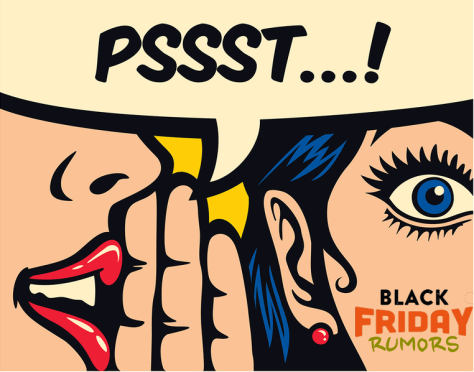The history of Black Friday is long and fraught with some negativity and rumors. It is also filed with some interesting statistics and facts from recent years. Read on and discover the interesting history of Black Friday.
The first recorded use of Black Friday
Black Friday was a bad day in 1869. Two ruthless financiers of Wall Street named Jay Gould and Jon Fisk, spent time in 1869 buying up all the gold they could that was available. The goal was to drive the price of gold way up and then sell the gold for an incredibly high profit. On Friday, September 24th, 1869, they got caught.
This sent the market into crisis and bankrupted people across the nation. They called it “Black Friday”.
The most often told story of Black Friday
The most often told story is a much more pleasant story. That stores had been operating “in the red” (at a loss) all year, and then suddenly on the day after Thanksgiving, all the sales and discounts bring out all the shoppers.
This is the day where stores began operating “in the black” (operating at a profit). This is not the actual story of Black Friday.
The other often told story now is that in the 1800s, southern plantation owners could buy slaves at a discount but only on the day after Thanksgiving. This story is also not accurate and has no basis in fact.
The accurate history of Black Friday
In the 1950s, in Philadelphia, police used the term “Black Friday” to describe the craziness of the day after Thanksgiving. Shoppers and tourists come to the city for the Army Navy football game. Cops couldn’t take the day off and they had to work extra long shifts.
There was also a rise in shoplifting that day. In 1961 Black Friday totally caught on in Philadelphia, and retailers tried to change the name to “Big Friday”. They failed. It soon caught on all over the country.
Retailers try to change the tale
In the late 1980s, retailers changed the story to the “red to black” positive story that we often now hear touted as the truth. Traditionally, stores see higher profits the Saturday before Christmas.
Sales Statistics for Black Friday 2019
- 30% of all sales for the year for stores occur from Black Friday through Christmas Day.
- 2019 had 93.2 million people shopping online.
- In 2019, online shopping sales hit $7.4 billion, which is an all-time high.
- 2.9 billion dollars worth of Black Friday sales came from people on their mobile devices.
- The average adult plans to spend around four hundred dollars on Black Friday.
- The average savings on Black Friday deals is 37%.
- About 50.4% of women are Black Friday shoppers.
- Millennials were the biggest spenders on Black Friday 2019.
Black Friday is busier than Cyber Monday
Black Friday shoppers numbered at 93.2 million, as compared to 83.3 million shoppers on Cyber Monday. This resulted in a 14% surge in online shopping, which hit a record 7.4 billion dollars. This did still fall short of predictions which sat at 7.5 billion dollars.
In shopper visits fell 6.2% on Black Friday 2019
Sales in person fell the lowest in five years (by 6.2%). Millennials were the biggest shoppers, and since they hate people it really isn’t that much of a reach for online sales to rise while in person sales fall.
In 2019, 40% of shoppers decided to buy online. This trend is expected to grow to 61% in 2020. This article was written near the beginning of the Coronavirus pandemic, on June 23rd, 2020.
Shopify purchases: Black Friday
Shopify made 900 million dollars in Black Friday sales in 2019. Approximately 69% were made through mobile devices and the remaining 31% were made through desktop.
All in all, Shopify would be the perfect example of why participating fully and advertising well for Black Friday is so important.






